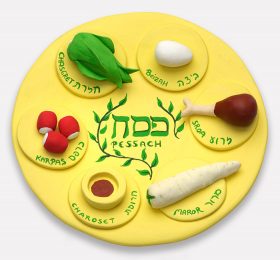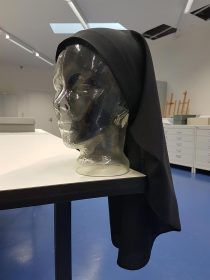What makes Rosh ha-Shanah special
The Jewish year 5778 begins today—and with it a very special time for the Jewish community worldwide. Rosh ha-Shanah is the beginning of the High Holy Days, the Yamim Noraim (literally “Days of Awe”) as they’re known in Hebrew.
I asked around my friend group a bit to find out what Rosh ha-Shanah means to them personally: → continue reading

Shlomit Tulgan made this Seder plate from clay for our children’s exhibition on Passover; Jewish Museum Berlin, photo: Jens Ziehe.
It’s Seder and the family is getting together. Some are traveling from farther away, others are flourishing right here. At the table are escarole, lettuce, parsley, kohlrabi, Belgian endive, and dandelion. But what about horseradish and red radish? They’re both late this year.
The story of the plants and their fruits that have particular meaning on the Seder plate at Passover could be told in various similar ways. They all grow in the Diaspora Garden, which you can visit inside the W. Michael Blumenthal Academy at the Jewish Museum. → continue reading
A Visit with Sister Katharina at Karmel Berlin

Sister Katharina donated this veil to us for our exhibition; Jewish Museum Berlin, photo: Katharina Erbe.
Covering one’s head has almost entirely disappeared from Christian women’s devotional practice. In Germany, you only actually see veils on the sisters of Catholic religious orders. In preparing for the exhibition Cherchez la femme (more about it on our website) we all agreed early on that we wanted a nun’s veil.
So I set out for Karmel Regina Martyrum in the northern part of Berlin’s Charlottenburg district, a convent of Discalced (or Barefoot) Carmelites. The convent’s wardrobe mistress, Sister Katharina, greeted me at the door. After some discussion, her view on the matter emerged as fairly sober: some people may ascribe specific spiritual meaning to certain items of clothing but it was very personal issue. In any one community you can meet with a wide variety of attitudes and practices.
Our conversation about the meaning of their religious dress began with Sister Katharina sharing an anecdote: → continue reading

